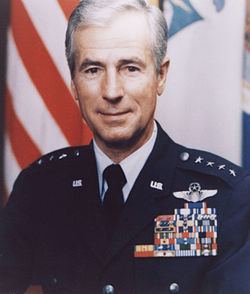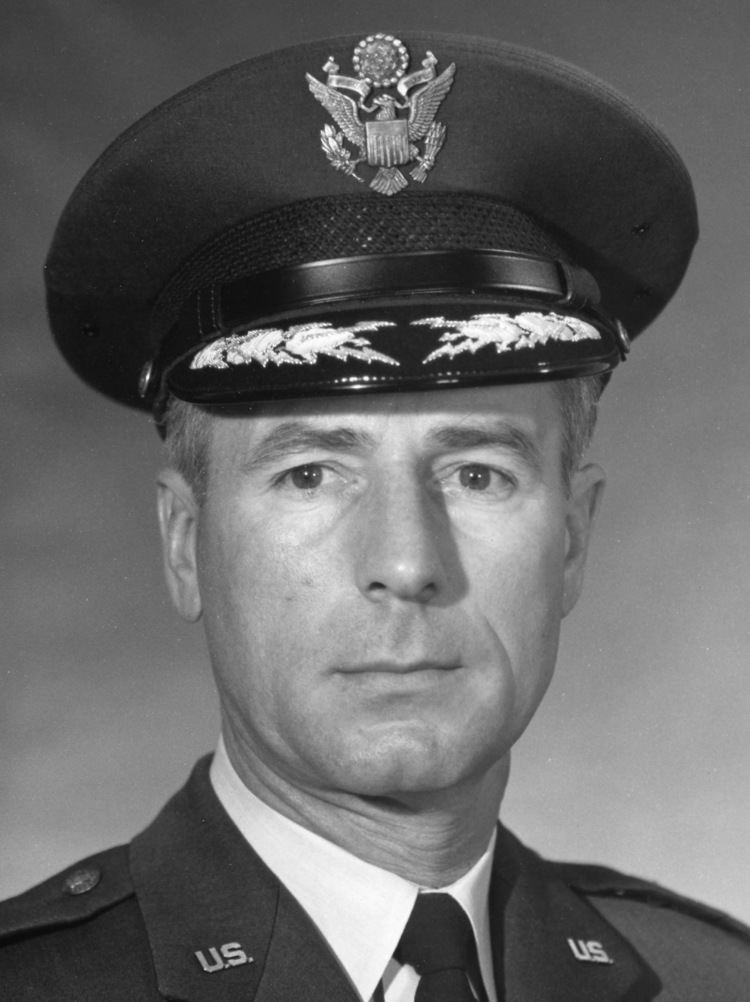Allegiance United States | Name James Hill Years of service 1942-1979 | |
 | ||
Commands held North American Air Defense CommandEighth Air ForceAlaskan CommandVice Commander-in-Chief, Strategic Air Command Battles/wars World War IIKorean WarVietnam War Awards Distinguished Service CrossSilver StarLegion of Merit (3)Distinguished Flying Cross (4)Air Medal (41) Battles and wars | ||
General james e hill lifetime space achievement award presentation 29th national space symposium
General James Erskine Hill (October 1, 1921 – May 20, 1999) was a World War II flying ace, U.S. Air Force general, and commander in chief of the North American Air Defense Command and the U.S. Air Force Aerospace Defense Command, with consolidated headquarters at Peterson Air Force Base, Colorado Springs, Colorado.
Contents
- General james e hill lifetime space achievement award presentation 29th national space symposium
- Ww ii vet james e hill
- Biography
- Awards and decorations
- Legacy
- References
Ww ii vet james e hill
Biography

Hill was born in 1921, in Stillwater, Oklahoma. He graduated from Stillwater High School and then attended Oklahoma State University and the University of Oklahoma. He entered the U.S. Army Air Corps as an aviation cadet in March 1942 and was commissioned as a second lieutenant upon completing pilot training in February 1943.
In December 1943, Hill was assigned to the European theater of operations as a P-47 Thunderbolt fighter pilot. He became a World War II ace, credited with five enemy aircraft shot down while flying 127 combat missions. He returned to the United States in September 1945 and was released from active duty in December 1945. He then became the commander of a P-51 Mustang squadron in the Oklahoma Air National Guard.
In November 1948, Hill returned to active duty and served as a flight commander with the 3525th Pilot Training Wing, Williams Air Force Base, Arizona. In August 1950, he was transferred to the 8th Fighter-Bomber Wing at Itazuke Air Base, Japan, and began flying combat missions in Korea. He later joined Headquarters Fifth Air Force, Osan Air Base, Korea, where he served as operations officer and chief, Fighter Operations Division, Directorate of Operations. He flew 128 combat missions as an F-80 pilot, downing one enemy aircraft.
Hill returned to the United States in September 1951 and was reassigned to the 3525th Pilot Training Wing as an operations and training staff officer. He transferred to Fort Bragg, North Carolina in January 1952 for duty with the Joint Tactical Air Support Board.
In April 1953, he departed for England to attend the Royal Air Force Flying College at Royal Air Force Station Manby as an exchange officer. Upon graduation, General Hill joined the 20th Fighter-Bomber Wing, Royal Air Force Station Wethersfield, England, and served as an operations staff officer and assistant director of operations for 10 months. In February 1955, he was transferred to the 79th Fighter-Bomber Squadron, Royal Air Force Station Woodbridge, England, where he served as squadron and base commander. In May 1956, he rejoined the 20th Fighter-Bomber Wing and served as director of operations and as deputy commander.
Hill returned to the United States in July 1957 and was assigned as senior Air Force adviser for the 121st Tactical Fighter Wing, Ohio Air National Guard, at Lockbourne Air Force Base, Ohio. From August 1960 to August 1963, he was assigned to Headquarters U.S. Air Force in the Office of the Deputy Chief of Staff, Operations, in the Directorate of Manpower and Organization, as chief of Contract Services Branch, and later served as deputy chief of Organizational Requirements Division.
He attended the Industrial College of the Armed Forces during 1963-64, and was awarded a Bachelor of Science degree in Business Administration from the University of Maryland in 1964. In August 1964, General Hill went to Clark Air Base, Republic of the Philippines, where he was deputy commander for operations of the 405th Fighter Wing; in September 1964, he became commander of the wing; and in January 1966, was reassigned on base to Headquarters Thirteenth Air Force as deputy chief of staff, plans and operations.
General Hill returned to the United States in July 1966 and commanded the 3615th Pilot Training Wing, Craig Air Force Base, Alabama. In July 1967, he was assigned as commander of the 40th Air Division at Wurtsmith Air Force Base, Michigan, and in June 1968, he assumed command of the 825th Strategic Aerospace Division at Little Rock Air Force Base, Arkansas. In January 1970, he became commander of the 42d Air Division, Blytheville Air Force Base, Arkansas.
General Hill was named deputy assistant to the secretary of defense (Atomic Energy) in July 1971. He remained in that post until June 1972 when he was transferred to the United Kingdom as commander of the Third Air Force. In November 1973, he returned to Headquarters U.S. Air Force to be assistant deputy chief of staff for plans and operations.
In September 1974, General Hill was assigned as commander in chief, Alaskan Command, with additional duty as commander, Alaskan North American Air Defense Region, with headquarters at Elmendorf Air Force Base, Alaska. He became commander of Alaskan Air Command after dissolution of ALCOM and assimilation of its responsibilities by AAC in July 1975.
General Hill was transferred during October 1976 to Barksdale Air Force Base, Louisiana, where, as commander of Eighth Air Force, he was responsible for all Strategic Air Command operations and bases in the eastern half of the United States. General Hill was vice commander in chief, SAC Headquarters at Offutt Air Force Base, Nebraska from July 1 to December 6, 1977, when he assumed command of NORAD, and was promoted to the grade of general on December 21, 1977. Hill retired on December 31, 1979, and in retirement was President of the Colorado Springs Chamber of Commerce. Hill died of cancer on May 20, 1999 and was buried at the United States Air Force Academy Cemetery.
Awards and decorations
He was a command pilot and wore the Master Missileman Badge. His military decorations and awards include the Distinguished Service Cross, Air Force Distinguished Service Medal with oak leaf cluster, Silver Star, Legion of Merit with two oak leaf clusters, Distinguished Flying Cross with three oak leaf clusters, Air Medal with 40 oak leaf clusters, Air Force Commendation Medal with oak leaf cluster, Army Commendation Medal, French Croix de Guerre, and Belgian Croix de Guerre.
Small Arms Expert Marksmanship Ribbon
Croix de Guerre with Palm (France)
Croix de Guerre, with Palm (Belgium)
Republic of Korea Presidential Unit Citation
Republic of Vietnam Gallantry Cross
United Nations Service Medal
Legacy
The General James E. Hill Lifetime Space Achievement Award is presented annually by the Space Foundation to an outstanding individual who has distinguished himself/herself through lifetime contributions to the welfare or betterment of humankind through the exploration, development and use of space, or the use of space technology, information, themes or resources in academic, cultural, industrial or other pursuits of broad benefit to humanity. Gen. Hill was the chairman of the Space Foundation from 1986–1999. Recipients include:
